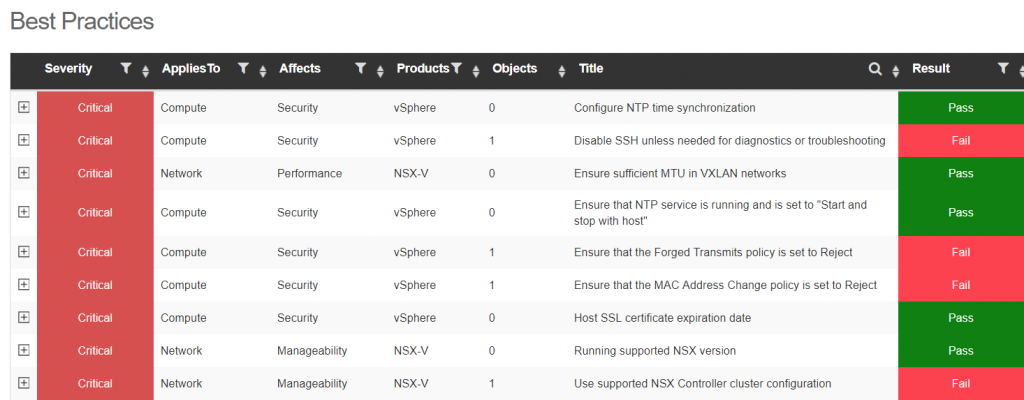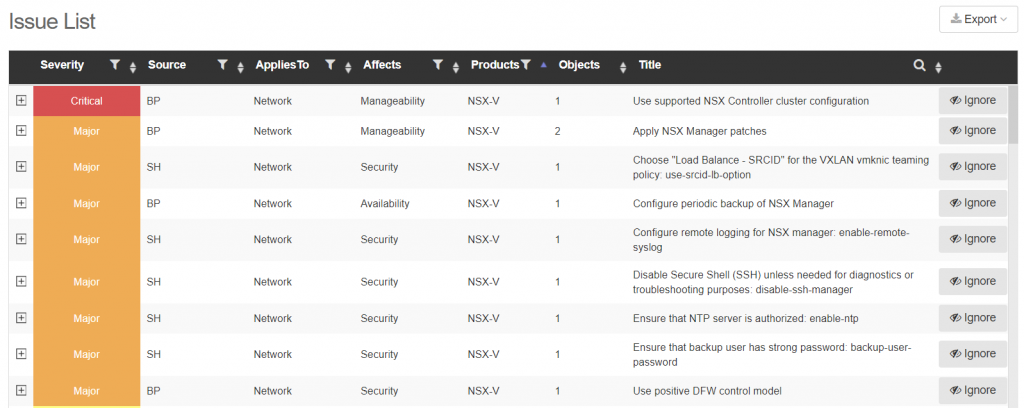Runecast is a powerful tool to monitoring and check a vSphere environment and recently also for a VSAN environment. But it’s not over, actually there is a beta for the new version (Runecast version: 1.7.6 probably) that can analyze also NSX-V environments and this could be quite cool, considering the potentially complexity of a NSX infrastructure.
I’ve tested the beta on a small lab, just to see how does it work.
As usually the installation it’s very easy and simple: just deploy an OVF template.
The configuration also remain almost the same, but with a new type of connection: the NSX connection.
The wizard can found the NSX manager paired with the vCenter and can configure a direct connection to it, for analyzing the NSX components:
Of course, for non NSX environments, you can simple skip the NSX configuration.
After the connections have been configured you will see something similar:
But there is another interesting option in the configuration that it’s quite new: the Syslog Server destination.
You can collect logs from the ESXi hosts and for the VMs, but most important you can simple configure the syslog setting for the host from the Runecast interface. For VM it will add a specific log file redirection.
At this point you can check all the configured systems:
Note that, at this time (in the beta), Runecast does not collect the syslog from the different NSX appliances. But could be nice, in the future, have this kind of feature, including the configuration for the appliances (considering that each has different settings for the syslog server).
At this point Runecast can analyze the environment, for example for the different best practices:
In this example, only a NSX controller has been detected (last row) and this is not supported on a production environment (where 3 controllers are required).
But it’s not limited to the different best practices, as usual can detect also potentially issues according with the different VMware KB:
Of course, something could change with the final version, but it’s very promising already at this stage. And it’s nice see own the product is growing in those years.
Maybe we can see soon also a support for NSX-T? Or other VMware’s products?








